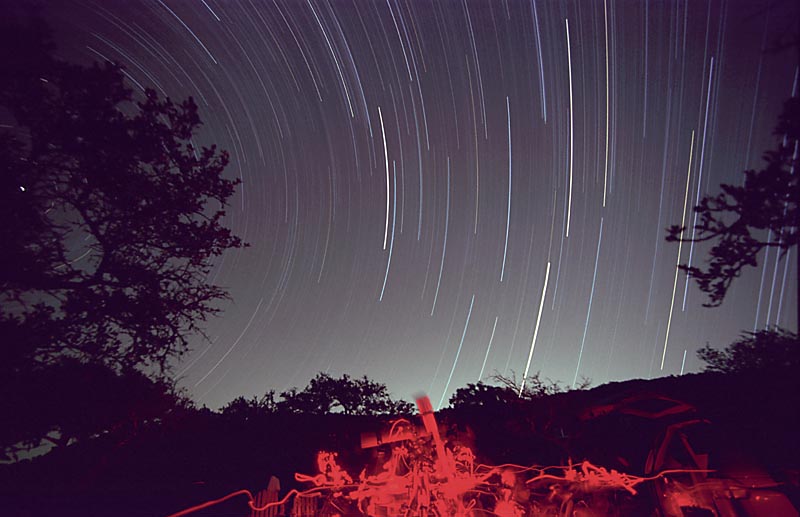17mm Star Trails
Copyright © 2001, Dick Locke. All Rights Reserved. Contact and Image Use Information

Star Trails from Starry Nights

Star Trails from Starry Nights
This is an exposure of approximately 2 hours using a very wide-angle (17mm) camera lens. Polaris, the North Star, is visible through the tree on the left. The three blue belt stars of Orion are on the far right. Saturn is the brightest trail, rising from the horizon to the right of middle. You can make out my telescope & equipment on the bottom -- the red light is from the dim red flashlight I use to avoid ruining my dark-adapted night vision. Notice the van on the lower right. The sky glow (near the horizon in the Northeast) is from Austin, about 50 miles away.
This photo gives you a good idea about how the sky works. The North Star doesn't move much. Nearby stars appear to rotate in tight circles about Polaris. As you move further away from North, the apparent motion is more linear. The stars in Orion are moving in nearly straight lines because they are close to the celestial equator. Further to the South, the circles actually curve in the opposite direction. Check out this page to see how the sky moves further south.
Starry Nights B&B, Wimberly TX, October, 2001
Photo by Dick Locke
120 minute exposure using a tripod & cable release
Tokina 17mm f3.5 lens at f5.6, OM2n camera
Kodak Royal Gold 100 print film
Negative Scan, Nikon Coolscan IV ED, Processed in Photoshop
Astronomy Pictures: Dick Locke's Astrophoto Gateway page....
Copyright © 2001 Dick Locke. All Rights Reserved.
Contact and Image Use Information
hits since 6/13/2003 update.